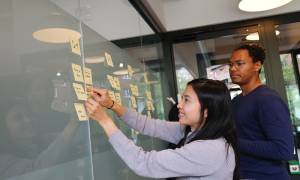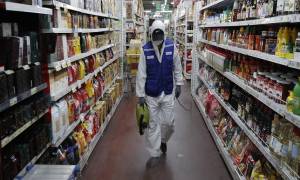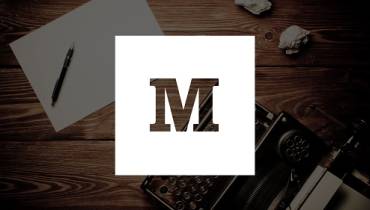
- Subject Guides

Academic writing: a practical guide
Criticality in academic writing.
- Academic writing
- The writing process
- Academic writing style
- Structure & cohesion
- Working with evidence
- Referencing
- Assessment & feedback
- Dissertations
- Reflective writing
- Examination writing
- Academic posters
- Feedback on Structure and Organisation
- Feedback on Argument, Analysis, and Critical Thinking
- Feedback on Writing Style and Clarity
- Feedback on Referencing and Research
- Feedback on Presentation and Proofreading
Being critical is at the heart of academic writing, but what is it and how can you incorporate it into your work?
What is criticality?
What is critical thinking.
Have you ever received feedback in a piece of work saying 'be more critical' or 'not enough critical analysis' but found yourself scratching your head, wondering what that means? Dive into this bitesize workshop to discover what it is and how to do it:
Critical Thinking: What it is and how to do it (bitesize workshop)[YouTube]
University-level work requires both descriptive and critical elements. But what's the difference?
Descriptive
Being descriptive shows what you know about a topic and provides the evidence to support your arguments. It uses simpler processes like remembering , understanding and applying . You might summarise previous research, explain concepts or describe processes.
Being critical pulls evidence together to build your arguments; what does it all mean together? It uses more complex processes: analysing , evaluating and creating . You might make comparisons, consider reasons and implications, justify choices or consider strengths and weaknesses.
Bloom's Taxonomy is a useful tool to consider descriptive and critical processes:
Bloom's Taxonomy [YouTube] | Bloom's Taxonomy [Google Doc]
Find out more about critical thinking:

What is critical writing?
Academic writing requires criticality; it's not enough to just describe or summarise evidence, you also need to analyse and evaluate information and use it to build your own arguments. This is where you show your own thoughts based on the evidence available, so critical writing is really important for higher grades.
Explore the key features of critical writing and see it in practice in some examples:
Introduction to critical writing [Google Slides]
While we need criticality in our writing, it's definitely possible to go further than needed. We’re aiming for that Goldilocks ‘just right’ point between not critical enough and too critical. Find out more:

Critical reading
Criticality isn't just for writing, it is also important to read critically. Reading critically helps you:
- evaluative whether sources are suitable for your assignments.
- know what you're looking for when reading.
- find the information you need quickly.
Critical reading [Interactive tutorial] | Critical reading [Google Doc]
Find out more on our dedicated guides:

Using evidence critically
Academic writing integrates evidence from sources to create your own critical arguments.
We're not looking for a list of summaries of individual sources; ideally, the important evidence should be integrated into a cohesive whole. What does the evidence mean altogether? Of course, a critical argument also needs some critical analysis of this evidence. What does it all mean in terms of your argument?
Find out more about using evidence to build critical arguments in our guide to working with evidence:

Critical language
Critical writing is going to require critical language. Different terms will give different nuance to your argument. Others will just keep things interesting! In the document below we go through some examples to help you out:
Assignment titles: critical or descriptive?
Assignment titles contain various words that show where you need to be descriptive and where you need to be critical. Explore some of the most common instructional words:
Descriptive instructional words
define : give the precise meaning
examine : look at carefully; consider different aspects
explain : clearly describe how a process works, why a decision was made, or give other information needed to understand the topic
illustrate : explain and describe using examples
outline : give an overview of the key information, leaving out minor details
Critical instructional words
analyse : break down the information into parts, consider how parts work together
discuss : explain a topic, make comparisons, consider strengths & weaknesses, give reasons, consider implications
evaluate : assess something's worth, value or suitability for a purpose - this often leads to making a choice afterwards
justify : show the reasoning behind a choice, argument or standpoint
synthesise : bring together evidence and information to create a cohesive whole, integrate ideas or issues
CC BY-NC-SA Learnhigher
More guidance on breaking down assignment titles:
- << Previous: Structure & cohesion
- Next: Working with evidence >>
- Last Updated: Oct 21, 2024 11:10 AM
- URL: https://subjectguides.york.ac.uk/academic-writing

Writing to Think: Critical Thinking and the Writing Process
“Writing is thinking on paper.” (Zinsser, 1976, p. vii)
Google the term “critical thinking.” How many hits are there? On the day this tutorial was completed, Google found about 65,100,000 results in 0.56 seconds. That’s an impressive number, and it grows more impressively large every day. That’s because the nation’s educators, business leaders, and political representatives worry about the level of critical thinking skills among today’s students and workers.
What is Critical Thinking?
Simply put, critical thinking is sound thinking. Critical thinkers work to delve beneath the surface of sweeping generalizations, biases, clichés, and other quick observations that characterize ineffective thinking. They are willing to consider points of view different from their own, seek and study evidence and examples, root out sloppy and illogical argument, discern fact from opinion, embrace reason over emotion or preference, and change their minds when confronted with compelling reasons to do so. In sum, critical thinkers are flexible thinkers equipped to become active and effective spouses, parents, friends, consumers, employees, citizens, and leaders. Every area of life, in other words, can be positively affected by strong critical thinking.
Released in January 2011, an important study of college students over four years concluded that by graduation “large numbers [of American undergraduates] didn’t learn the critical thinking, complex reasoning and written communication skills that are widely assumed to be at the core of a college education” (Rimer, 2011, para. 1). The University designs curriculum, creates support programs, and hires faculty to help ensure you won’t be one of the students “[showing]no significant gains in . . . ‘higher order’ thinking skills” (Rimer, 2011, para. 4). One way the University works to help you build those skills is through writing projects.
Writing and Critical Thinking
Say the word “writing” and most people think of a completed publication. But say the word “writing” to writers, and they will likely think of the process of composing. Most writers would agree with novelist E. M. Forster, who wrote, “How can I know what I think until I see what I say?” (Forster, 1927, p. 99). Experienced writers know that the act of writing stimulates thinking.
Inexperienced and experienced writers have very different understandings of composition. Novice writers often make the mistake of believing they have to know what they’re going to write before they can begin writing. They often compose a thesis statement before asking questions or conducting research. In the course of their reading, they might even disregard material that counters their pre-formed ideas. This is not writing; it is recording.
In contrast, experienced writers begin with questions and work to discover many different answers before settling on those that are most convincing. They know that the act of putting words on paper or a computer screen helps them invent thought and content. Rather than trying to express what they already think, they express what the act of writing leads them to think as they put down words. More often than not, in other words, experienced writers write their way into ideas, which they then develop, revise, and refine as they go.
What has this notion of writing to do with critical thinking? Everything.
Consider the steps of the writing process: prewriting, outlining, drafting, revising, editing, seeking feedback, and publishing. These steps are not followed in a determined or strict order; instead, the effective writer knows that as they write, it may be necessary to return to an earlier step. In other words, in the process of revision, a writer may realize that the order of ideas is unclear. A new outline may help that writer re-order details. As they write, the writer considers and reconsiders the effectiveness of the work.
The writing process, then, is not just a mirror image of the thinking process: it is the thinking process. Confronted with a topic, an effective critical thinker/writer
- asks questions
- seeks answers
- evaluates evidence
- questions assumptions
- tests hypotheses
- makes inferences
- employs logic
- draws conclusions
- predicts readers’ responses
- creates order
- drafts content
- seeks others’ responses
- weighs feedback
- criticizes their own work
- revises content and structure
- seeks clarity and coherence
Example of Composition as Critical Thinking
“Good writing is fueled by unanswerable questions” (Lane, 1993, p. 15).
Imagine that you have been asked to write about a hero or heroine from history. You must explain what challenges that individual faced and how they conquered them. Now imagine that you decide to write about Rosa Parks and her role in the modern Civil Rights movement. Take a moment and survey what you already know. She refused to get up out of her seat on a bus so a White man could sit in it. She was arrested. As a result, Blacks in Montgomery protested, influencing the Montgomery Bus Boycott. Martin Luther King, Jr. took up leadership of the cause, and ultimately a movement was born.
Is that really all there is to Rosa Parks’s story? What questions might a thoughtful writer ask? Here a few:
- Why did Rosa Parks refuse to get up on that particular day?
- Was hers a spontaneous or planned act of defiance?
- Did she work? Where? Doing what?
- Had any other Black person refused to get up for a White person?
- What happened to that individual or those individuals?
- Why hadn’t that person or those persons received the publicity Parks did?
- Was Parks active in Civil Rights before that day?
- How did she learn about civil disobedience?
Even just these few questions could lead to potentially rich information.
Factual information would not be enough, however, to satisfy an assignment that asks for an interpretation of that information. The writer’s job for the assignment is to convince the reader that Parks was a heroine; in this way the writer must make an argument and support it. The writer must establish standards of heroic behavior. More questions arise:
- What is heroic action?
- What are the characteristics of someone who is heroic?
- What do heroes value and believe?
- What are the consequences of a hero’s actions?
- Why do they matter?
Now the writer has even more research and more thinking to do.
By the time they have raised questions and answered them, raised more questions and answered them, and so on, they are ready to begin writing. But even then, new ideas will arise in the course of planning and drafting, inevitably leading the writer to more research and thought, to more composition and refinement.
Ultimately, every step of the way over the course of composing a project, the writer is engaged in critical thinking because the effective writer examines the work as they develop it.
Why Writing to Think Matters
Writing practice builds critical thinking, which empowers people to “take charge of [their] own minds” so they “can take charge of [their] own lives . . . and improve them, bringing them under [their] self command and direction” (Foundation for Critical Thinking, 2020, para. 12). Writing is a way of coming to know and understand the self and the changing world, enabling individuals to make decisions that benefit themselves, others, and society at large. Your knowledge alone – of law, medicine, business, or education, for example – will not be enough to meet future challenges. You will be tested by new unexpected circumstances, and when they arise, the open-mindedness, flexibility, reasoning, discipline, and discernment you have learned through writing practice will help you meet those challenges successfully.
Forster, E.M. (1927). Aspects of the novel . Harcourt, Brace & Company.
The Foundation for Critical Thinking. (2020, June 17). Our concept and definition of critical thinking . https://www.criticalthinking.org/pages/our-concept-of-critical-thinking/411
Lane, B. (1993). After the end: Teaching and learning creative revision . Heinemann.
Rimer, S. (2011, January 18). Study: Many college students not learning to think critically . The Hechinger Report. https://www.mcclatchydc.com/news/nation-world/national/article24608056.html
Zinsser, W. (1976). On writing well: The classic guide to writing nonfiction . HarperCollins.
Share this:
- Click to email a link to a friend (Opens in new window)
- Click to share on Facebook (Opens in new window)
- Click to share on Reddit (Opens in new window)
- Click to share on Twitter (Opens in new window)
- Click to share on LinkedIn (Opens in new window)
- Click to share on Pinterest (Opens in new window)
- Click to print (Opens in new window)
Follow Blog via Email
Enter your email address to follow this blog and receive email notifications of new posts.
Email Address
- RSS - Posts
- RSS - Comments
- COLLEGE WRITING
- USING SOURCES & APA STYLE
- EFFECTIVE WRITING PODCASTS
- LEARNING FOR SUCCESS
- PLAGIARISM INFORMATION
- FACULTY RESOURCES
- Student Webinar Calendar
- Academic Success Center
- Writing Center
- About the ASC Tutors
- DIVERSITY TRAINING
- PG Peer Tutors
- PG Student Access
Subscribe to Blog via Email
Enter your email address to subscribe to this blog and receive notifications of new posts by email.
- College Writing
- Using Sources & APA Style
- Learning for Success
- Effective Writing Podcasts
- Plagiarism Information
- Faculty Resources
- Tutor Training
Twitter feed

- News, tips, inspiration you can trust to thrive in today’s digital age.
Search form
The importance of critical thinking in writing (and how to apply it).

Developing unique ideas for writing and writing a story worth reading can be challenging. Even when the ideas for writing are already in your head, writing requires research, organization, and a great deal of creativity. But, you already knew that, right?
What many people don’t know or don't realize, however, is that all those processes for effective writing depend on how well you’ve developed your critical thinking skills.
According to the Texas A&M University Writing Center, critical thinking is "the ability to view any object of study from multiple perspectives, to recognize the cultural, ideological, and cognitive frames (or schemata) we bring to understanding."
You can learn everything about story structure and all the rules that come with it such as formatting, language and grammar rules , but applying your ideas effectively in an actual piece of writing requires critical thinking.
Critical thinking is what glues all of the writing processes together and defines your writing style .
Critical Thinking Informs All Good Writing

The best writers are those who think critically and may have even undergone some form of critical thinking training . The value of critical thinking is clear thought-processing, which results in well-developed plots and writings. When you need to write a story that reads well and avoids plot holes and inconsistencies , honing your critical thinking is necessary.
You can perform the research necessary for a story and plan to finish with a strong conclusion. But, when you don’t apply critical thinking in your story, your ideas risk coming across as ambiguous or not well thought out. This is because you can’t really plan out your arguments or provide the story’s premises effectively without critical thinking.
Critical thinking in writing is related to research in the way you deliberately search, analyze and evaluate ideas that you'll put on paper. However, critical thinking discriminates information and ideas to ensure you pick and use only the most appropriate, concise words and paragraphs that deliver messages powerfully and with great impact on readers.
Reserchers have also come to understand that critical thinking is in itself a habit and a skill, something which you can practice, polish, and develop.
Hone Your Critical Thinking Skills
To consciously direct and hone your critical thinking skills, you’ll need to answer some basic questions before writing your story:
- How good is my argument or story idea?
- Is my argument or idea defensible and valid?
- Am I using a rational, reasonable position on the idea or issue?
- What should I use to best present this idea and deal with its complexity?
- Should I go deep into the topic or only touch upon the key issues lightly?
- Should I address any other points of view, and which ones?
- What are my goals with the story?
- What sources of information should I consult?
- What's the best way to present the information?
When asking (and answering) these questions, your analytical skills and quality of answers will depend greatly on the clarity of your thoughts, sources, and intentions. Once that's done sufficiently, you can apply it all to your writing.
8 Ways to Apply Critical Thinking in Your Writing

To make sure you write your story based on sound critical thinking, use these handy tips:
1. Research by questioning everything
Not all of the sources you will be using for your story, research, and critical analysis will be accurate or even relevant. Thinking critically means that you should question all your sources and be careful about the acquisition of data you’ll use in your story.
To write critically, you must examine every little piece of information before using it; validate and parse as part of your research . Basically, you need a rather active, critical and detailed approach throughout the accumulation of information.
2. Scrutinize your method of gathering information
Before you use any of the evidence or information you have found during the research for your story , look at the method for its gathering.
Think of sources you plan to use and places where you can find them. But, most importantly, think of the sources’ credibility and whether or not you can ascertain this.
Only use information that is reliable in your stories.
3. Stay true to the evidence
Before you jump into any conclusions, examine the evidence and the unbiased direction it is pointing towards.
Carefully examining the evidence for your ideas will help you find information that is valid, and any other information you might have missed out on an argument of big importance.
To avoid turning your story into a poorly written one, stay true to the evidence you’ve collected. Also consider the evidence itself in detail.
Is the evidence too broad? Does it have too many details? Are there any other explanations you can provide for it? Do you have enough evidence to support your arguments? Use only the most appropriate and accurate evidence.
4. Eliminate truisms and tautologies
Truism is a truth that is self-evident, while tautology is a statement that repeats the same thing. Both create redundancy that in most cases, doesn’t add directly to your story.
Even though truism and tautology used masterfully could give a story a certain artistic quality, you should generally try to avoid them in your writing.
Critically look for statements in your writing that repeat themselves or are self-evident. These are unnecessary features of your writing that should be removed to improve precision and clarity in your story.
5. Avoid oversimplification
There is a fine line between improving clarity and oversimplification. Try to achieve the former, while eradicating the latter as much as possible.
We are talking about using short, concise, easy to understand and simple explanations, and avoiding dumbed down explanations that insult the intelligence of the reader and demonstrate a lack of breadth and depth.
That certainly calls for high critical thinking and judgment when writing or crafting a story.
6. Plan ahead
When selecting a topic for your story, brainstorm ideas for it beforehand. Make sure the topic you chose is right for the specific purpose. Think of your objectives and goals, and also what you represent.
By brainstorming and planning ahead, you’ll be better equipped to write a story that is concise, relevant, and properly organized.
One grand factor of planning is organization. To plan ahead and do it well, you need to prioritize and reorganize your concepts, ideas, and arguments well.
In other words, you need a chronology of ideas and arguments. Use careful discretion and judgment to create a plan that makes sense and demonstrates your critical thinking abilities.
7. Define your approaches
In writing, you need arguments and ideas. But, you cannot just toss them around anyhow and expect them to make sense.
Instead, you’ll not only need good organization and planning skills, but also a strategy or an approach for presenting them in the most effective way possible.
As soon as you have all the evidence and material ready for use in your story, analyze the strengths and weaknesses of your sources and the arguments they raise. This will help you define the best possible approach for using the evidence and material in your story.
While you take care of this part, remember that each and every argument and evidence used in your story should be as reasonable as it is valid.
8. Break down your arguments
To better present the relationships between arguments in your story, and to find the best writing approach, break down arguments into smaller, easy to understand parts. For this purpose, you can use priority ranking, comparison and contrast, cause and effect, making inferences, and drawing conclusions.
Cons of Not Using Critical Thinking in Your Writing
If you are thinking applying critical thinking in writing is too much of a hassle, then understand that not incorporating critical thinking leads to poor writing.
And it’s easy to detect the effects of not using critical thinking in writing. Some of the obvious signs of not applying critical thinking is a piece of writing include:
- Relationships between concepts aren’t clearly described, but only summarized or alluded to.
- The arguments or thesis are repetitive and don’t relate to the rest of the story.
- Poor or no order whatsoever in the presentation of arguments, summaries, and evidence.
- No chronology or sequel in sentences, arguments, and or paragraphs.
- Weak summaries or summaries with no order.
- Relationships between arguments aren’t fully developed.
- Heavy use of truisms, tautologies, and or abstractions.
If you want to write powerfully and ensure your stories (be they blogs, essays, or reports) yield results and impact readers , you have to improve clarity and add informational value. The only way to do this is by employing critical thinking in your writing.
Critical thinking is an essential skill and practice not just for good writing, but also for effective storytelling within your writings.
Alexandra Reay is a journalist, writer, and editor. She is also a professional content writer who enjoys researching and writing on the topics of self-improvement, technology innovations, and global education development. Follow her on Twitter .
Related stories
Things Successful Writers Do Differently to Write More Fluidly
Quirky Things Top Creative Minds Did to Generate Brilliant Ideas
Types of Music for Inspiration While Writing
Practical Tips for Beating Writers' Block
Why Writing Longhand Is Still So Important
View the discussion thread.
Share this article
SUBSCRIBE TO OUR NEWSLETTER
Get our best content, news, tips, and inspiration in your inbox free.
Join Over 20,000 Subscribers!
Get our best content, tips, and inspiration free in your inbox. Subscribe ››
Most read this week

Got a story or tip for us?

Here's how to submit it →
Latest posts
Unlock your financial potential by building an ‘opportunity fund’.
![Career Transition? Unlock Your Financial Potential by Building an ‘Opportunity Fund’ [node:title]](https://webwriterspotlight.com/sites/default/files/styles/front_featured__front_/public/opportunity-fund-conept.jpeg?itok=ZJbI_zFZ)
10 Luxurious Cities the World’s Billionaires Call Home
![10 Luxurious Cities the World’s Billionaires Call Home [node:title]](https://webwriterspotlight.com/sites/default/files/styles/front_featured__front_/public/new-york-city-skyline.jpeg?itok=jWvAlaId)
Asking Your Boss for a Raise or Time Off? Here’s The Perfect Time to Do It
![Asking Your Boss for a Raise or Time Off? Here’s The Perfect Time to Do It [node:title]](https://webwriterspotlight.com/sites/default/files/styles/front_featured__front_/public/boss-worker-asking-for-raise.jpeg?itok=qZ22krfS)
Posting Corporate Content On Social Media: What 'Work Influencers' Need to Know
![What 'Work Influencers' Need to Know About Posting Corporate Content On Social Media [node:title]](https://webwriterspotlight.com/sites/default/files/styles/front_featured__front_/public/work-influencer-at-desk-camera-laptop.jpeg?itok=OlUKqZtC)
Understanding Business Insurance Policies: Key Terms and Definitions
![Understanding Business Insurance Policies: Key Terms and Definitions [node:title]](https://webwriterspotlight.com/sites/default/files/styles/front_featured__front_/public/business-insurance.jpeg?itok=ErsVEJiG)
- Load 5 More Stories ▽
Contributors blogs
Blog here »

7 Usability Rules That’ll Help You Build Great Websites

Sales Strategies for “The New Normal”


Start Freelancing: Best Freelancing Tools for Newbie Freelancers

What Is Intellectual Property and How Can Businesses Protect It?

4 Secrets for Building a Successful Travel Blog

Expert Tips for Moving Forward After Struggling with Substance Use

How to Keep Workers from Getting Sick Amidst COVID-19 Outbreak
Like this content subscribe for updates.
EXPLORE MORE ...
News & Features ›

Medium Debuts Membership Subscription Program, Now Paying Contributors

Most Discussed Scams Online: Crypto Scams Get Over 21 Billion Views

Working from Home Remains a Select Privilege. It’s Time to Fix That

Tech & Trends ›

How to Improve Your Java Coding Skills

iPhone Proxy: How You Can Shield Your Phone's IP (And Why)

Why You Should Consider More Affordable Sim-Only Plans
Arts & culture ›.

10 Classic Audio Books That Can Help You Become Super Rich

Feeling Downcast? One Creative Act a Day Can Lift Your Spirit, Make You Happier

10 Best Musical Instruments for Beginners

Business & Economy ›

Why We Love Embedding Social Media Feeds on Websites, And You Should Too!

5 Tips for Handling & Moving Furniture Safely In Your Premises

10 Reasons People Fail at Basic Email Etiquette (& How to Charm With Yours)

Health & Style ›

6 Herbs That Will Enhance Your Immune System

5 Classic Types of Coffee You Must Try

Live Simply and Reduce Carbon Footprint: 5 Ideas for Your New Tiny House
Want to create or adapt books like this? Learn more about how Pressbooks supports open publishing practices.
3 Critical Thinking in College Writing: From the Personal to the Academic
Gita DasBender
There is something about the term “critical thinking” that makes you draw a blank every time you think about what it means. [1] It seems so fuzzy and abstract that you end up feeling uncomfortable, as though the term is thrust upon you, demanding an intellectual effort that you may not yet have. But you know it requires you to enter a realm of smart, complex ideas that others have written about and that you have to navigate, understand, and interact with just as intelligently. It’s a lot to ask for. It makes you feel like a stranger in a strange land.
As a writing teacher I am accustomed to reading and responding to difficult texts. In fact, I like grappling with texts that have interesting ideas no matter how complicated they are because I understand their value. I have learned through my years of education that what ultimately engages me, keeps me enthralled, is not just grammatically pristine, fluent writing, but writing that forces me to think beyond the page. It is writing where the writer has challenged herself and then offered up that challenge to the reader, like a baton in a relay race. The idea is to run with the baton.
You will often come across critical thinking and analysis as requirements for assignments in writing and upper-level courses in a variety of disciplines. Instructors have varying explanations of what they actually require of you, but, in general, they expect you to respond thoughtfully to texts you have read. The first thing you should remember is not to be afraid of critical thinking. It does not mean that you have to criticize the text, disagree with its premise, or attack the writer simply because you feel you must. Criticism is the process of responding to and evaluating ideas, argument, and style so that readers understand how and why you value these items.
Critical thinking is also a process that is fundamental to all disciplines. While in this essay I refer mainly to critical thinking in composition, the general principles behind critical thinking are strikingly similar in other fields and disciplines. In history, for instance, it could mean examining and analyzing primary sources in order to understand the context in which they were written. In the hard sciences, it usually involves careful reasoning, making judgments and decisions, and problem solving. While critical thinking may be subject-specific, that is to say, it can vary in method and technique depending on the discipline, most of its general principles such as rational thinking, making independent evaluations and judgments, and a healthy skepticism of what is being read, are common to all disciplines. No matter the area of study, the application of critical thinking skills leads to clear and flexible thinking and a better understanding of the subject at hand.
To be a critical thinker you not only have to have an informed opinion about the text but also a thoughtful response to it. There is no doubt that critical thinking is serious thinking, so here are some steps you can take to become a serious thinker and writer.
Attentive Reading: A Foundation for Critical Thinking
A critical thinker is always a good reader because to engage critically with a text you have to read attentively and with an open mind, absorbing new ideas and forming your own as you go along. Let us imagine you are reading an essay by Annie Dillard, a famous essayist, called “Living like Weasels.” Students are drawn to it because the idea of the essay appeals to something personally fundamental to all of us: how to live our lives. It is also a provocative essay that pulls the reader into the argument and forces a reaction, a good criterion for critical thinking.
So let’s say that in reading the essay you encounter a quote that gives you pause. In describing her encounter with a weasel in Hollins Pond, Dillard says, “I would like to learn, or remember, how to live . . . I don’t think I can learn from a wild animal how to live in particular . . . but I might learn something of mindlessness, something of the purity of living in the physical senses and the dignity of living without bias or motive” (220). You may not be familiar with language like this. It seems complicated, and you have to stop ever so often (perhaps after every phrase) to see if you understood what Dillard means. You may ask yourself these questions:
- What does “mindlessness” mean in this context?
- How can one “learn something of mindlessness?”
- What does Dillard mean by “purity of living in the physical senses?”
- How can one live “without bias or motive?”
These questions show that you are an attentive reader. Instead of simply glossing over this important passage, you have actually stopped to think about what the writer means and what she expects you to get from it. Here is how I read the quote and try to answer the questions above: Dillard proposes a simple and uncomplicated way of life as she looks to the animal world for inspiration. It is ironic that she admires the quality of “mindlessness” since it is our consciousness, our very capacity to think and reason, which makes us human, which makes us beings of a higher order. Yet, Dillard seems to imply that we need to live instinctually, to be guided by our senses rather than our intellect. Such a “thoughtless” approach to daily living, according to Dillard, would mean that our actions would not be tainted by our biases or motives, our prejudices. We would go back to a primal way of living, like the weasel she observes. It may take you some time to arrive at this understanding on your own, but it is important to stop, reflect, and ask questions of the text whenever you feel stumped by it. Often such questions will be helpful during class discussions and peer review sessions.
Listing Important Ideas
When reading any essay, keep track of all the important points the writer makes by jotting down a list of ideas or quotations in a notebook. This list not only allows you to remember ideas that are central to the writer’s argument, ideas that struck you in some way or the other, but it also you helps you to get a good sense of the whole reading assignment point by point. In reading Annie Dillard’s essay, we come across several points that contribute toward her proposal for better living and that help us get a better understanding of her main argument. Here is a list of some of her ideas that struck me as important:
- “The weasel lives in necessity and we live in choice, hating necessity and dying at the last ignobly in its talons” (220).
- “And I suspect that for me the way is like the weasel’s: open to time and death painlessly, noticing everything, remembering nothing, choosing the given with a fierce and pointed will” (221).
- “We can live any way we want. People take vows of poverty, chastity, and obedience—even of silence—by choice. The thing is to stalk your calling in a certain skilled and supple way, to locate the most tender and live spot and plug into that pulse” (221).
- “A weasel doesn’t ‘attack’ anything; a weasel lives as he’s meant to, yielding at every moment to the perfect freedom of single necessity” (221).
- “I think it would be well, and proper, and obedient, and pure, to grasp your one necessity and not let it go, to dangle from it limp wherever it takes you” (221).
These quotations give you a cumulative sense of what Dillard is trying to get at in her essay, that is, they lay out the elements with which she builds her argument. She first explains how the weasel lives, what she learns from observing the weasel, and then prescribes a lifestyle she admires—the central concern of her essay.
Noticing Key Terms and Summarizing Important Quotes
Within the list of quotations above are key terms and phrases that are critical to your understanding of the ideal life as Dillard describes it. For instance, “mindlessness,” “instinct,” “perfect freedom of a single necessity,” “stalk your calling,” “choice,” and “fierce and pointed will” are weighty terms and phrases, heavy with meaning, that you need to spend time understanding. You also need to understand the relationship between them and the quotations in which they appear. This is how you might work on each quotation to get a sense of its meaning and then come up with a statement that takes the key terms into account and expresses a general understanding of the text:
Quote 1 : Animals (like the weasel) live in “necessity,” which means that their only goal in life is to survive. They don’t think about how they should live or what choices they should make like humans do. According to Dillard, we like to have options and resist the idea of “necessity.” We fight death—an inevitable force that we have no control over—and yet ultimately surrender to it as it is the necessary end of our lives. Quote 2 : Dillard thinks the weasel’s way of life is the best way to live. It implies a pure and simple approach to life where we do not worry about the passage of time or the approach of death. Like the weasel, we should live life in the moment, intensely experiencing everything but not dwelling on the past. We should accept our condition, what we are “given,” with a “fierce and pointed will.” Perhaps this means that we should pursue our one goal, our one passion in life, with the same single-minded determination and tenacity that we see in the weasel. Quote 3 : As humans, we can choose any lifestyle we want. The trick, however, is to go after our one goal, one passion like a stalker would after a prey. Quote 4 : While we may think that the weasel (or any animal) chooses to attack other animals, it is really only surrendering to the one thing it knows: its need to live. Dillard tells us there is “the perfect freedom” in this desire to survive because to her, the lack of options (the animal has no other option than to fight to survive) is the most liberating of all. Quote 5 : Dillard urges us to latch on to our deepest passion in life (the “one necessity”) with the tenacity of a weasel and not let go. Perhaps she’s telling us how important it is to have an unwavering focus or goal in life.
Writing a Personal Response: Looking Inward
Dillard’s ideas will have certainly provoked a response in your mind, so if you have some clear thoughts about how you feel about the essay this is the time to write them down. As you look at the quotes you have selected and your explanation of their meaning, begin to create your personal response to the essay. You may begin by using some of these strategies:
- Tell a story. Has Dillard’s essay reminded you of an experience you have had? Write a story in which you illustrate a point that Dillard makes or hint at an idea that is connected to her essay.
- Focus on an idea from Dillard’s essay that is personally important to you. Write down your thoughts about this idea in a first person narrative and explain your perspective on the issue.
- If you are uncomfortable writing a personal narrative or using “I” (you should not be), reflect on some of her ideas that seem important and meaningful in general. Why were you struck by these ideas?
- Write a short letter to Dillard in which you speak to her about the essay. You may compliment her on some of her ideas by explaining why you like them, ask her a question related to her essay and explain why that question came to you, and genuinely start up a conversation with her.
This stage in critical thinking is important for establishing your relationship with a text. What do I mean by this “relationship,” you may ask? Simply put, it has to do with how you feel about the text. Are you amazed by how true the ideas seem to be, how wise Dillard sounds? Or are you annoyed by Dillard’s let-me-tell-you-how-to-live approach and disturbed by the impractical ideas she so easily prescribes? Do you find Dillard’s voice and style thrilling and engaging or merely confusing? No matter which of the personal response options you select, your initial reaction to the text will help shape your views about it.
Making an Academic Connection: Looking Outward
First year writing courses are designed to teach a range of writing— from the personal to the academic—so that you can learn to express advanced ideas, arguments, concepts, or theories in any discipline. While the example I have been discussing pertains mainly to college writing, the method of analysis and approach to critical thinking I have demonstrated here will serve you well in a variety of disciplines. Since critical thinking and analysis are key elements of the reading and writing you will do in college, it is important to understand how they form a part of academic writing. No matter how intimidating the term “academic writing” may seem (it is, after all, associated with advanced writing and becoming an expert in a field of study), embrace it not as a temporary college requirement but as a habit of mind.
To some, academic writing often implies impersonal writing, writing that is detached, distant, and lacking in personal meaning or relevance. However, this is often not true of the academic writing you will do in a composition class. Here your presence as a writer—your thoughts, experiences, ideas, and therefore who you are—is of much significance to the writing you produce. In fact, it would not be farfetched to say that in a writing class academic writing often begins with personal writing. Let me explain. If critical thinking begins with a personal view of the text, academic writing helps you broaden that view by going beyond the personal to a more universal point of view. In other words, academic writing often has its roots in one’s private opinion or perspective about another writer’s ideas but ultimately goes beyond this opinion to the expression of larger, more abstract ideas. Your personal vision—your core beliefs and general approach to life— will help you arrive at these “larger ideas” or universal propositions that any reader can understand and be enlightened by, if not agree with. In short, academic writing is largely about taking a critical, analytical stance toward a subject in order to arrive at some compelling conclusions.
Let us now think about how you might apply your critical thinking skills to move from a personal reaction to a more formal academic response to Annie Dillard’s essay. The second stage of critical thinking involves textual analysis and requires you to do the following:
- Summarize the writer’s ideas the best you can in a brief paragraph. This provides the basis for extended analysis since it contains the central ideas of the piece, the building blocks, so to speak.
- Evaluate the most important ideas of the essay by considering their merits or flaws, their worthiness or lack of worthiness. Do not merely agree or disagree with the ideas but explore and explain why you believe they are socially, politically, philosophically, or historically important and relevant, or why you need to question, challenge, or reject them.
- Identify gaps or discrepancies in the writer’s argument. Does she contradict herself? If so, explain how this contradiction forces you to think more deeply about her ideas. Or if you are confused, explain what is confusing and why.
- Examine the strategies the writer uses to express her ideas. Look particularly at her style, voice, use of figurative language, and the way she structures her essay and organizes her ideas. Do these strategies strengthen or weaken her argument? How?
- Include a second text—an essay, a poem, lyrics of a song— whose ideas enhance your reading and analysis of the primary text. This text may help provide evidence by supporting a point you’re making, and further your argument.
- Extend the writer’s ideas, develop your own perspective, and propose new ways of thinking about the subject at hand.
Crafting the Essay
Once you have taken notes and developed a thorough understanding of the text, you are on your way to writing a good essay. If you were asked to write an exploratory essay, a personal response to Dillard’s essay would probably suffice. However, an academic writing assignment requires you to be more critical. As counter-intuitive as it may sound, beginning your essay with a personal anecdote often helps to establish your relationship to the text and draw the reader into your writing. It also helps to ease you into the more complex task of textual analysis. Once you begin to analyze Dillard’s ideas, go back to the list of important ideas and quotations you created as you read the essay. After a brief summary, engage with the quotations that are most important, that get to the heart of Dillard’s ideas, and explore their meaning. Textual engagement, a seemingly slippery concept, simply means that you respond directly to some of Dillard’s ideas, examine the value of Dillard’s assertions, and explain why they are worthwhile or why they should be rejected. This should help you to transition into analysis and evaluation. Also, this part of your essay will most clearly reflect your critical thinking abilities as you are expected not only to represent Dillard’s ideas but also to weigh their significance. Your observations about the various points she makes, analysis of conflicting viewpoints or contradictions, and your understanding of her general thesis should now be synthesized into a rich new idea about how we should live our lives. Conclude by explaining this fresh point of view in clear, compelling language and by rearticulating your main argument.
Modeling Good Writing
When I teach a writing class, I often show students samples of really good writing that I’ve collected over the years. I do this for two reasons: first, to show students how another freshman writer understood and responded to an assignment that they are currently working on; and second, to encourage them to succeed as well. I explain that although they may be intimidated by strong, sophisticated writing and feel pressured to perform similarly, it is always helpful to see what it takes to get an A. It also helps to follow a writer’s imagination, to learn how the mind works when confronted with a task involving critical thinking. The following sample is a response to the Annie Dillard essay. Figure 1 includes the entire student essay and my comments are inserted into the text to guide your reading.
Though this student has not included a personal narrative in his essay, his own world-vievvw is clear throughout. His personal point of view, while not expressed in first person statements, is evident from the very beginning. So we could say that a personal response to the text need not always be expressed in experiential or narrative form but may be present as reflection, as it is here. The point is that the writer has traveled through the rough terrain of critical thinking by starting out with his own ruminations on the subject, then by critically analyzing and responding to Dillard’s text, and finally by developing a strongpoint of view of his own about our responsibility as human beings. As readers we are engaged by clear, compelling writing and riveted by critical thinking that produces a movement of ideas that give the essay depth and meaning. The challenge Dillard set forth in her essay has been met and the baton passed along to us.
Building our Lives: The Blueprint Lies Within
We all may ask ourselves many questions, some serious, some less important, in our lifetime. But at some point along the way, we all will take a step back and look at the way we are living our lives, and wonder if we are living them correctly. Unfortunately, there is no solid blueprint for the way to live our lives. Each person is different, feeling different emotions and reacting to different stimuli than the person next to them. Many people search for the true answer on how to live our lives, as if there are secret instructions out there waiting to be found. But the truth is we as a species are given a gift not many other creatures can claim to have: the ability to choose to live as we want, not as we were necessarily designed to. [2] Even so, people look outside of themselves for the answers on how to live, which begs me to ask the question: what is wrong with just living as we are now, built from scratch through our choices and memories? [3]
[Annie Dillard’s essay entitled “Living Like Weasels” is an exploration into the way human beings might live, clearly stating that “We could live any way we want” (Dillard 211). Dillard’s encounter with an ordinary weasel helped her receive insight into the difference between the way human beings live their lives and the way wild animals go about theirs. As a nature writer, Dillard shows us that we can learn a lot about the true way to live by observing nature’s other creations. While we think and debate and calculate each and every move, these creatures just simply act. [4] The thing that keeps human beings from living the purest life possible, like an animal such as the weasel, is the same thing that separates us from all wild animals: our minds. Human beings are creatures of caution, creatures of undeniable fear, never fully living our lives because we are too caught up with avoiding risks. A weasel, on the other hand, is a creature of action and instinct, a creature which lives its life the way it was created to, not questioning his motives, simply striking when the time to strike is right. As Dillard states, “the weasel lives in necessity and we live in choice, hating necessity and dying at the last ignobly in its talons” (Dillard 210). [5]
It is important to note and appreciate the uniqueness of the ideas Dillard presents in this essay because in some ways they are very true. For instance, it is true that humans live lives of caution, with a certain fear that has been built up continually through the years. We are forced to agree with Dillard’s idea that we as humans “might learn something of mindlessness, something of the purity of living in the physical senses and the dignity of living without bias or motive” (Dillard 210). To live freely we need to live our lives with less hesitation, instead of intentionally choosing to not live to the fullest in fear of the consequences of our actions. [6] However, Dillard suggests that we should forsake our ability of thought and choice all together. The human mind is the tool that has allowed a creature with no natural weapons to become the unquestioned dominant species on this plant planet, and though it curbs the spontaneity of our lives, it is not something to be simply thrown away for a chance to live completely “free of bias or motive” (Dillard 210). [7] We are a moral, conscious species, complete with emotions and a firm conscience, and it is the power of our minds that allows us to exist as we do now: with the ability to both think and feel at the same time. It grants us the ability to choose and have choice, to be guided not only by feelings and emotions but also by morals and an understanding of consequence. [8] As such, a human being with the ability to live like a weasel has given up the very thing that makes him human. [9]
Here, the first true flaw of Dillard’s essay comes to light. While it is possible to understand and even respect Dillard’s observations, it should be noted that without thought and choice she would have never been able to construct these notions in the first place. [10] Dillard protests, “I tell you I’ve been in that weasel’s brain for sixty seconds, and he was in mine” (Dillard 210). One cannot cast oneself into the mind of another creature without the intricacy of human thought, and one would not be able to choose to live as said creature does without the power of human choice. In essence, Dillard would not have had the ability to judge the life of another creature if she were to live like a weasel. Weasels do not make judgments; they simply act and react on the basis of instinct. The “mindlessness” that Dillard speaks of would prevent her from having the option to choose her own reactions. Whereas the conscious-‐ thinking Dillard has the ability to see this creature and take the time to stop and examine its life, the “mindless” Dillard would only have the limited options to attack or run away. This is the major fault in the logic of Dillard’s essay, as it would be impossible for her to choose to examine and compare the lives of humans and weasels without the capacity for choice. [11]
Dillard also examines a weasel’s short memory in a positive light and seems to believe that a happier life could be achieved if only we were simple-minded enough to live our lives with absolutely no regret. She claims, “I suspect that for me the way is like the weasel’s: open to time and death painlessly, noticing everything, remembering nothing, choosing the given with a fierce and pointed will” (Dillard 210). In theory, this does sound like a positive value. To be able to live freely without a hint of remembrance as to the results of our choices would be an interesting life, one may even say a care-free life. But at the same time, would we not be denying our responsibility as humans to learn from the mistakes of the past as to not replicate them in the future? [12] Human beings’ ability to remember is almost as important as our ability to choose, because [13] remembering things from the past is the only way we can truly learn from them. History is taught throughout our educational system for a very good reason: so that the generations of the future do not make the mistakes of the past. A human being who chooses to live like a weasel gives up something that once made him very human: the ability to learn from his mistakes to further better himself.
Ultimately, without the ability to choose or recall the past, mankind would be able to more readily take risks without regard for consequences. [14] Dillard views the weasel’s reaction to necessity as an unwavering willingness to take such carefree risks and chances. She states that “it would be well, and proper, and obedient, and pure, to grasp your one necessity and not let it go, to dangle from it limp wherever it takes you” (Dillard 211). Would it then be productive for us to make a wrong choice and be forced to live in it forever, when we as a people have the power to change, to remedy wrongs we’ve made in our lives? [15] What Dillard appears to be recommending is that humans not take many risks, but who is to say that the ability to avoid or escape risks is necessarily a flaw with mankind?
If we had been like the weasel, never wanting, never needing, always “choosing the given with a fierce and pointed will” (Dillard 210), our world would be a completely different place. The United States of America might not exist at this very moment if we had just taken what was given to us, and unwaveringly accepted a life as a colony of Great Britain. But as Cole clearly puts it, “A risk that you assume by actually doing something seems far more risky than a risk you take by not doing something, even though the risk of doing nothing may be greater” (Cole 145). As a unified body of people, we were able to go against that which was expected of us, evaluate the risk in doing so, and move forward with our revolution. The American people used the power of choice, and risk assessment, to make a permanent change in their lives; they used the remembrance of Britain’s unjust deeds to fuel their passion for victory. [16] We as a people chose. We remembered. We distinguished between right and wrong. These are things that a weasel can never do, because a weasel does not have a say in its own life, it only has its instincts and nothing more.
Humans are so unique in the fact that they can dictate the course of their own lives, but many people still choose to search around for the true way to live. What they do not realize is that they have to look no further than themselves. Our power, our weapon, is our ability to have thought and choice, to remember, and to make our own decisions based on our concepts of right and wrong, good and bad. These are the only tools we will ever need to construct the perfect life for ourselves from the ground up. And though it may seem like a nice notion to live a life free of regret, it is our responsibility as creatures and the appointed caretakers of this planet to utilize what was given to us and live our lives as we were meant to, not the life of any other wild animal. [17]
- Write about your experiences with critical thinking assignments. What seemed to be the most difficult? What approaches did you try to overcome the difficulty?
- Respond to the list of strategies on how to conduct textual analysis. How well do these strategies work for you? Add your own tips to the list.
- Evaluate the student essay by noting aspects of critical thinking that are evident to you. How would you grade this essay? What other qualities (or problems) do you notice?
Works Cited
Dillard, Annie. “Living like Weasels.” One Hundred Great Essays . Ed. Robert DiYanni. New York: Longman, 2002. 217–221. Print.
- This work is licensed under the Creative Commons AttributionNoncommercial-ShareAlike 3.0 United States License and is subject to the Writing Spaces’ Terms of Use. To view a copy of this license, visit http://creativecommons.org/licenses/by-nc-sa/3.0/us/ or send a letter to Creative Commons, 171 Second Street, Suite 300, San Francisco, California, 94105, USA. To view the Writing Spaces’ Terms of Use, visit http://writingspaces.org/terms-of-use . ↵
- Comment : Even as the writer starts with a general introduction, he makes a claim here that is related to Dillard’s essay. ↵
- Comment : The student asks what seems like a rhetorical question but it is one he will answer in the rest of his essay. It is also a question that forces the reader to think about a key term from the text— “choices.” ↵
- Comment : Student summarizes Dillard’s essay by explaining the ideas of the essay in fresh words. ↵
- Comment : Up until this point the student has introduced Dillard’s essay and summarized some of its ideas. In the section that follows, he continues to think critically about Dillard’s ideas and argument. ↵
- Comment : This is a strong statement that captures the student’s appreciation of Dillard’s suggestion to live freely but also the ability to recognize why most people cannot live this way. This is a good example of critical thinking. ↵
- Comment : Again, the student acknowledges the importance of conscious thought. ↵
- Comment : While the student does not include a personal experience in the essay, this section gives us a sense of his personal view of life. Also note how he introduces the term “morals” here to point out the significance of the consequences of our actions. The point is that not only do we need to act but we also need to be aware of the result of our actions. ↵
- Comment : Student rejects Dillard’s ideas but only after explaining why it is important to reject them. ↵
- Comment : Student dismantles Dillard’s entire premise by telling us how the very act of writing the essay negates her argument. He has not only interpreted the essay but figured out how its premise is logically flawed. ↵
- Comment : Once again the student demonstrates why the logic of Dillard’s argument falls short when applied to her own writing. ↵
- Comment : This question represents excellent critical thinking. The student acknowledges that theoretically “remembering nothing’ may have some merits but then ponders on the larger socio-‐political problem it presents. ↵
- Comment : The student brings two ideas together very smoothly here. ↵
- Comment : The writer sums up his argument while once again reminding us of the problem with Dillard’s ideas. ↵
- Comment : This is another thoughtful question that makes the reader think along with the writer. ↵
- Comment : The student makes a historical reference here that serves as strong evidence for his own argument. ↵
- Comment : This final paragraph sums up the writer’s perspective in a thoughtful and mature way. It moves away from Dillard’s argument and establishes the notion of human responsibility, an idea highly worth thinking about. ↵
Critical Thinking in College Writing: From the Personal to the Academic Copyright © 2011 by Gita DasBender is licensed under a Creative Commons Attribution-NonCommercial-ShareAlike 4.0 International License , except where otherwise noted.
Share This Book
Academic Writing: Critical Thinking & Writing
- Academic Writing
- Planning your writing
- Structuring your assignment
- Critical Thinking & Writing
- Building an argument
- Reflective Writing
- Summarising, paraphrasing and quoting
Critical Thinking
One of the most important features of studying at university is the expectation that you will engage in thinking critically about your subject area.
Critical thinking involves asking meaningful questions concerning the information, ideas, beliefs, and arguments that you will encounter. It requires you to approach your studies with a curious, open mind, discard preconceptions, and interrogate received knowledge and established practices.
Critical thinking is key to successfully expressing your individuality as an independent learner and thinker in an academic context. It is also a valuable life skill.
Critical thinking enables you to:
- Evaluate information, its validity and significance in a particular context.
- Analyse and interpret evidence and data in response to a line of enquiry.
- Weigh-up alternative explanations and arguments.
- Develop your own evidence-based and well-reasoned arguments.
- Develop well-informed viewpoints.
- Formulate your own independent, justifiable ideas.
- Actively engage with the wider scholarship of your academic community.
Writing Critically
Being able to demonstrate and communicate critical thinking in your written assignments through critical writing is key to achieving academic success.
Critical writing can be distinguished from descriptive writing which is concerned with conveying information rather than interrogating information. Understanding the difference between these two styles of academic writing and when to use them is important.
The balance between descriptive writing and critical writing will vary depending on the nature of the assignment and the level of your studies. Some level of descriptive writing is generally necessary to support critical writing. More sophisticated criticality is generally required at higher levels of study with less descriptive content. You will continue to develop your critical writing skills as you progress through your course.
Descriptive Writing and Critical Writing
- Descriptive Writing
- Critical Writing
- Examples of Critical Writing
Descriptive writing demonstrates the knowledge you have of a subject, and your knowledge of what other people say about that subject. Descriptive writing often responds to questions framed as ‘what’ , ‘where’ , ‘who’ and ‘when’ .
Descriptive writing might include the following:
- Description of what something is or what it is about (an account, facts, observable features, details): a topic, problem, situation, or context of the subject under discussion.
- Description of where it takes place (setting and context), who is involved and when it occurs.
- Re-statement or summary of what others say about the topic.
- Background facts and information for a discussion.
Description usually comes before critical content so that the reader can understand the topic you are critically engaging with.
Critical writing requires you to apply interpretation, analysis, and evaluation to the descriptions you have provided. Critical writing often responds to questions framed as ‘how’ or ‘why’ . Often, critical writing will require you to build an argument which is supported by evidence.
Some indicators of critical writing are:
- Investigation of positive and negative perspectives on ideas
- Supporting ideas and arguments with evidence, which might include authoritative sources, data, statistics, research, theories, and quotations
- Balanced, unbiased appraisal of arguments and counterarguments/alternative viewpoints
- Honest recognition of the limitations of an argument and supporting evidence
- Plausible, rational, convincing, and well-reasoned conclusions
Critical writing might include the following:
- Applying an idea or theory to different situations or relate theory to practice. Does the idea work/not work in practice? Is there a factor that makes it work/not work? For example: 'Smith's (2008) theory on teamwork is effective in the workplace because it allows a diverse group of people with different skills to work effectively'.
- Justifying why a process or policy exists. For example: 'It was necessary for the nurse to check the patient's handover notes because...'
- Proposing an alternative approach to view and act on situations. For example: 'By adopting a Freirian approach, we could view the student as a collaborator in our teaching and learning'. Or: 'If we had followed the NMC guidelines we could have made the patient feel calm and relaxed during the consultation'.
- Discussion of the strengths and weaknesses of an idea/theory/policy. Why does this idea/theory/policy work? Or why does this idea not work? For example: 'Although Smith's (2008) theory on teamwork is useful for large teams, there are challenges in applying this theory to teams who work remotely'.
- Discussion of how the idea links to other ideas in the field (synthesis). For example: 'the user experience of parks can be greatly enhanced by examining Donnelly's (2009) customer service model used in retail’.
- Discussion of how the idea compares and contrasts with other ideas/theories. For example: ‘The approach advocated by the NMC differs in comparison because of factor A and factor C’.
- Discussion of the ‘’up-to-datedness” and relevance of an idea/theory/policy (its currency). For example: 'although this approach was successful in supporting the local community, Smith's model does not accommodate the needs of a modern global economy'.
- Evaluating an idea/theory/policy by providing evidence-informed judgment. For example: 'Therefore, May's delivery model should be discontinued as it has created significant issues for both customers and staff (Ransom, 2018)'.
- Creating new perspectives or arguments based on knowledge. For example: 'to create strong and efficient buildings, we will look to the designs provided by nature. The designs of the Sydney Opera House are based on the segments of an orange (Cook, 2019)'.
Further Reading
- << Previous: Structuring your assignment
- Next: Building an argument >>
- Last Updated: Sep 4, 2024 4:33 PM
- URL: https://libguides.uos.ac.uk/academic-writing
➔ About the Library
➔ Meet the Team
➔ Customer Service Charter
➔ Library Policies & Regulations
➔ Privacy & Data Protection
Essential Links
➔ A-Z of eResources
➔ Frequently Asked Questions
➔Discover the Library
➔Referencing Help
➔ Print & Copy Services
➔ Service Updates
Library & Learning Services, University of Suffolk, Library Building, Long Street, Ipswich, IP4 1QJ
✉ Email Us: [email protected]
✆ Call Us: +44 (0)1473 3 38700
Critical writing: What is critical writing?
- Managing your reading
- Source reliability
- Critical reading
- Descriptive vs critical
- Deciding your position
- The overall argument
- Individual arguments
- Signposting
- Alternative viewpoints
- Critical thinking videos
Jump to content on this page:
“If we are uncritical we shall always find what we want: we shall look for, and find confirmations” Karl Popper, cited in: Critical Thinking (Tom Chatfield)
Critical writing needs critical thinking. While most of this guide focuses on critical writing, it is first important to consider what we mean by criticality at university. This is because critical writing is primarily a process of evidencing and articulating your critical thinking. As such, it is really important to get the 'thinking bit' of your studies right! If you are able to demonstrate criticality in your thinking, it will make critical writing easier.
Williams’ (2009:viii) introduces criticality at university as:
“being thoughtful, asking questions, not taking things you read (or hear) at face value. It means finding information and understanding different approaches and using them in your writing.
What is critical thinking?
Critical thinking requires you to carefully evaluate not just sources of information, but also the ideas within them and the arguments they develop. This is an essential part of being a student at university. You cannot simply believe everything you read or are told. For some people, this can feel uncomfortable as this requires you to critique published authors and notable academics. While this may feel inappropriate, it is one of the foundations of academic debate. Indeed, for any given topic or issue, there are many equally valid academic positions. To be effective in your critical thinking, you need to use both scepticism and objectivity :
Scepticism requires you to bring doubt and a questioning attitude to your academic work. In essence, you must ensure you do not automatically accept everything you hear, read or see as true (Chatfield, 2018). This requires you to question everything you hear, read or see . This is the first step towards developing a critical approach.
Objectivity
Objectivity requires you to approach your work with a more neutral perspective . While it is not possible to take yourself out of your work, when you are engaging in critical thinking you need to acknowledge anything that influences your perspective. This is very important as without this level of self-awareness you can focus more on your opinion than developing a reasoned argument.
Remember, you CAN criticise the experts - the University of Sussex make this point well here: Critical Thinking: Criticising the experts .
A short introduction to critical writing
Making your thinking more critical with questions
This page has so far demonstrated the importance of asking questions in all of your academic work and learning. Questions are the root of criticality. Questions engage you in active thought, requiring you to process what you are hearing, reading, seeing or experiencing against what you already know. All questions, however, are not as equally probing. Questions like 'what', 'when' and 'who' tend to be more descriptive in contrast to questions like 'how' or 'so what' which are much more critical .
When engaging in critical thinking, you need to use a range of questions to fully consider the topic or issue you are trying to understand. Descriptive questions are great for developing your initial understanding, but you also need to consider more analytical and evaluatory questions to fully engage in critical thinking . The diagram below introduces some of the core critical questions:

Based on: University of Plymouth
Critical questions when reading
Most of your critical thinking should be directed towards your reading of the literature. This is because the literature forms the basis of all academic writing, serving as the evidence for whatever point(s) you are trying to make. Our Reading at University SkillsGuide contains some useful sections which apply criticality to determining source reliability and identifying an argument. Direct links to these can be found below:
- << Previous: Home
- Next: Managing your reading >>
- Last Updated: Feb 13, 2024 10:53 AM
- URL: https://libguides.hull.ac.uk/criticalwriting
- Login to LibApps
- Library websites Privacy Policy
- University of Hull privacy policy & cookies
- Website terms and conditions
- Accessibility
- Report a problem


IMAGES
VIDEO
COMMENTS
It is generally considered that evidence of critical thinking, as expressed through argumentation, is central to successful academic writing at Western universities.
Critical thinking skills are important for engaging with academic literature and informing your own writing. What is critical writing? Academic writing requires criticality; it's not enough to just describe or summarise evidence, you also need to analyse and evaluate information and use it to build your own arguments.
Why is critical thinking important? Critical thinking is important for making judgments about sources of information and forming your own arguments. It emphasizes a rational, objective, and self-aware approach that can help you to identify credible sources and strengthen your conclusions.
What is Critical Thinking? Simply put, critical thinking is sound thinking. Critical thinkers work to delve beneath the surface of sweeping generalizations, biases, clichés, and other quick observations that characterize ineffective thinking.
Critical thinking in writing is related to research in the way you deliberately search, analyze and evaluate ideas that you'll put on paper. However, critical thinking discriminates information and ideas to ensure you pick and use only the most appropriate, concise words and paragraphs that deliver messages powerfully and with great impact on ...
The Pillars of Academic Writing Academic writing is built upon three truths that aren’t self-evident: – Writing is Thinking: While “writing” is traditionally understood as the expression of thought, we’ll redefine “writing” as the thought process itself. Writing is not what you do with thought. Writing is thinking.
A critical thinker is always a good reader because to engage critically with a text you have to read attentively and with an open mind, absorbing new ideas and forming your own as you go along. Let us imagine you are reading an essay by Annie Dillard, a famous essayist, called “Living like Weasels.”
Critical thinking is key to successfully expressing your individuality as an independent learner and thinker in an academic context. It is also a valuable life skill. Critical thinking enables you to: Evaluate information, its validity and significance in a particular context. Analyse and interpret evidence and data in response to a line of ...
Criticism is the process of responding to and evaluating ideas, argument, and style so that readers understand how and why you value these items. Critical thinking is also a process that is fundamental to all disciplines.
Critical writing needs critical thinking. While most of this guide focuses on critical writing, it is first important to consider what we mean by criticality at university. This is because critical writing is primarily a process of evidencing and articulating your critical thinking.